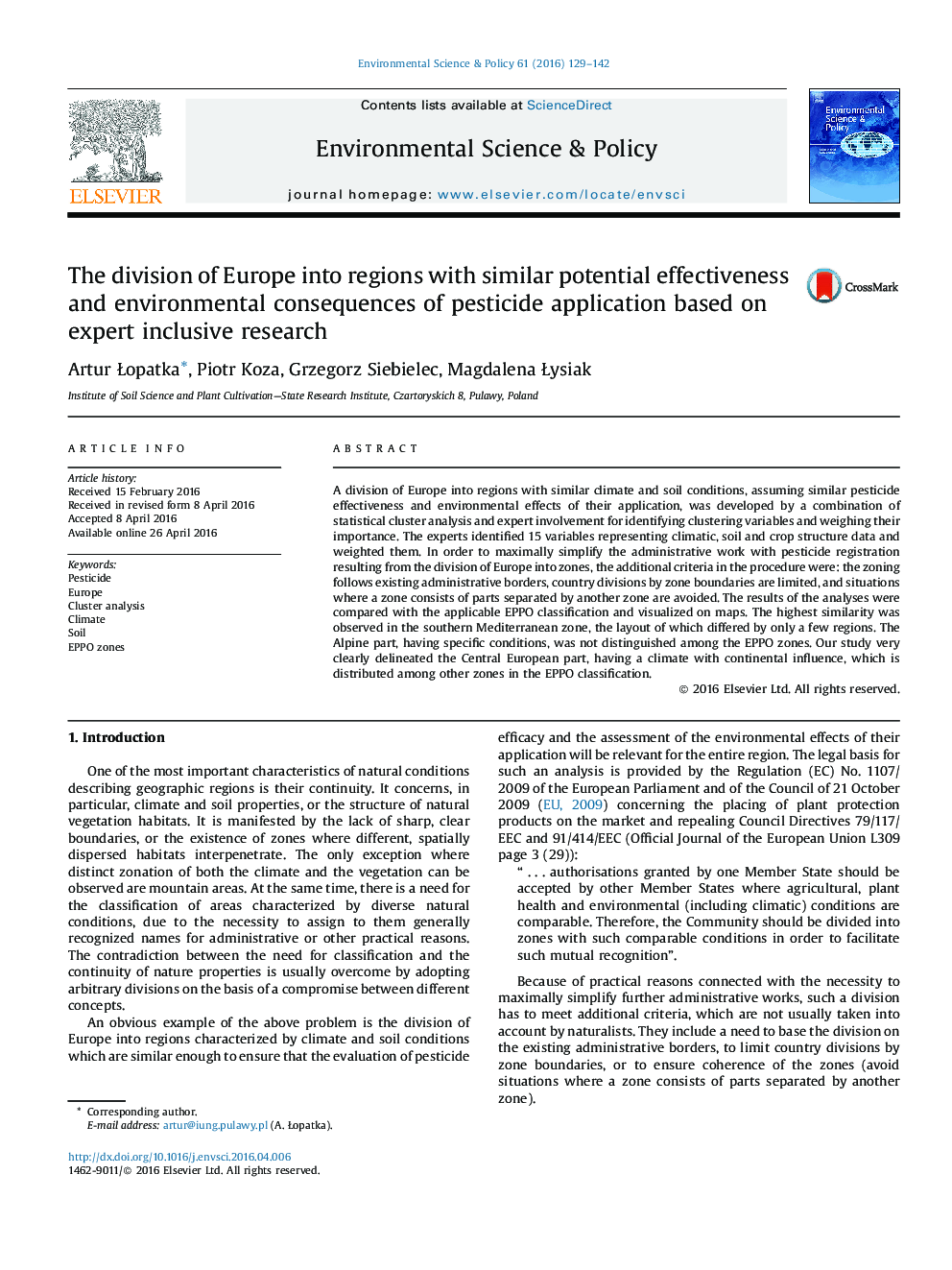| Article ID | Journal | Published Year | Pages | File Type |
|---|---|---|---|---|
| 7466856 | Environmental Science & Policy | 2016 | 14 Pages |
Abstract
A division of Europe into regions with similar climate and soil conditions, assuming similar pesticide effectiveness and environmental effects of their application, was developed by a combination of statistical cluster analysis and expert involvement for identifying clustering variables and weighing their importance. The experts identified 15 variables representing climatic, soil and crop structure data and weighted them. In order to maximally simplify the administrative work with pesticide registration resulting from the division of Europe into zones, the additional criteria in the procedure were: the zoning follows existing administrative borders, country divisions by zone boundaries are limited, and situations where a zone consists of parts separated by another zone are avoided. The results of the analyses were compared with the applicable EPPO classification and visualized on maps. The highest similarity was observed in the southern Mediterranean zone, the layout of which differed by only a few regions. The Alpine part, having specific conditions, was not distinguished among the EPPO zones. Our study very clearly delineated the Central European part, having a climate with continental influence, which is distributed among other zones in the EPPO classification.
Related Topics
Physical Sciences and Engineering
Energy
Renewable Energy, Sustainability and the Environment
Authors
Artur Åopatka, Piotr Koza, Grzegorz Siebielec, Magdalena Åysiak,
